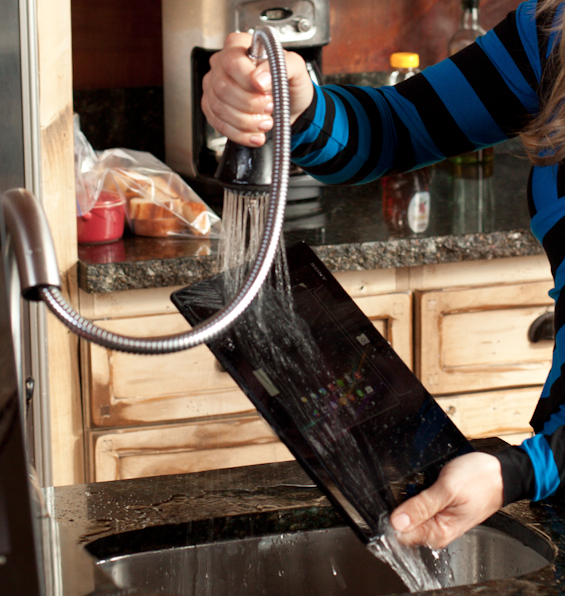As seen in Jennifer Jolly’s, USA Today TECH Now Report:
Making money online sounds like a dream come true — which is probably why so many spam e-mails and scam websites litter the Internet and our inboxes with promises of easy money. But earning extra cash on the Internet isn’t just a pipe dream. If you use a bit of common sense to dodge the scams, there are lots of legitimate opportunities to make a little extra pocket money, or even fund a dream vacation. Here are some of the bestlegalnew ways to use the Internet to line your wallet.
Crowdfund your way to success
When you hear the word “crowdfunding,” chances are you automatically think about Kickstarter, which lets designers, developers and writers pitch product ideas that anyone can contribute to. But with GoFundMe, you can use the power of crowdfunding to help pay for your next vacation, cover unexpected bills, go to graduate school or just about anything else. Whatever goal you’re trying to reach, write it up on the site and then ask your friends, family and anyone else to chip in to help — you’ll be surprised at how a few dollars from all of your friends can add up!
Answer questions and share your expertise
Who knew that answering questions could earn you cash? Sites like JustAnswer will pay you (as long as you’re qualified) to answer questions submitted by people who need advice they can trust. For instance, if you’re a tech genius, someone might ask you to help them set up their new smartphone. You have a law degree? Maybe someone needs a simple legal question answered. Auto mechanic? Please, tell me how to reset the car’s computer after I change the oil (but first, walk me through how to change the oil). This is a great way to take what you know and turn it into a nice little side business for yourself.
Another service I have put to the test recently is Rewarder. You sign up and see if you can help anyone who has posted a “reward.” Today, someone is offering $100 if you can help them find their poodle. Another person is offering $50 for a travel itinerary to Sydney, Australia. My personal favorite, someone will pay $20 for proposal ideas for his girlfriend. Easy, fun and the “rewards” add up.
Sell your time or services
If you have free time, there are a lot of services that can turn that time into money earned. Fiverr is an online marketplace where you can post anything you’re willing to do: your creativity (and what people are willing to pay for) is all that limits you. Payments, as the name implies, start at $5 but can go higher. I also like online storefront Zaarly — which is kind of a personal concierge service. Using the site requires you to submit an application, but once you’re approved, what you sell is up to you: dog-walking services? Pilates lessons? Homemade birthday cakes? Closet organization? Describe and price your services as you see fit and wait for orders to come in. One bummer, though, is that it’s not available everywhere yet — check the site to see if it’s offered in your area.
The (small) downside to both of these services is that they require you to have some personal marketing skills: To succeed, you need to convince people on Fiverr and Zaarly that your services are worth paying for.
Ibotta lets users get cash rewards for purchases.
Buy things (and save)
Clipping coupons can be a pain, but a new wave of couponing apps is here to help us save money and even get cash rewards — just for doing the shipping! Ibotta works lets you buy products listed in the app, take a photo of your receipt with your smartphone and get cash rewards deposited into your PayPal account. Ibotta also asks you to watch ads, answer poll questions, or do other small tasks to earn your savings. SavingStar is a similar rewards program, but it ties into your grocery or pharmacy’s rewards card to track your purchases, so you don’t have the hassle of scanning receipts — but on the downside, it works only with a select range of stores. Both of these apps are easier than clipping coupons, and the small savings ($0.25 to $1.00 seems the most common) will add up over time.
Antengo connects you with others in your area who want to buy or sell products.
Have a yard sale … from your smartphone
Yard sales are a great way to earn some extra cash, but they can be a hassle to set up and run. So instead, why not take a picture of what you want to sell on your smartphone and offer it up on the online classified service Antengo? It connects you with others in your area who are want to buy your stuff — Antengo will automatically post the photo and your description of the item to users of its app and to sites like Craigslist and Facebook, so your ad gets the widest reach possible. I’m a little addicted to this service. A garage sale has never been so easy.
There are other services, but these are a few newer ones that most people I know aren’t aware of. What others do you know about? Be sure to let us know in the comments section below.
Posted in Digital Parenting, Girlfriend's Guide, Great Gadgets, In The Press, TechNow, TechStyled, Tips & Tricks, Top tech news






